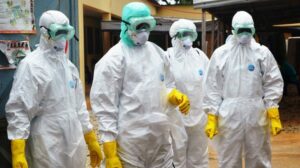Rwanda has demonstrated remarkable efficiency in combating health emergencies, setting a benchmark for crisis management in Africa. When faced with the threat of the Marburg virus—a highly contagious and deadly disease—Rwanda acted swiftly, leveraging its robust healthcare system, proactive government policies, and community engagement. Here’s a detailed look at how Rwanda successfully contained the Marburg virus, ensuring minimal impact on its population.
Understanding the Marburg Virus
The Marburg virus, a member of the same family as the Ebola virus, causes severe hemorrhagic fever with a high fatality rate. The disease spreads through direct contact with bodily fluids, contaminated surfaces, or infected animals, particularly fruit bats. Early symptoms such as fever, headache, and muscle pain can quickly escalate to severe internal bleeding, organ failure, and death if not treated promptly.
Rwanda’s Proactive Approach to Fighting Marburg
When the Marburg virus emerged as a potential threat, Rwanda responded with a multi-faceted strategy encompassing early detection, robust containment, and effective communication.
1. Early Detection and Surveillance
Rwanda’s commitment to disease surveillance played a critical role in its response:
- Health Monitoring Systems: The country’s investment in advanced health monitoring systems allowed rapid identification of potential cases.
- Border Screening: Given Marburg’s history of cross-border spread, Rwanda tightened screening protocols at all points of entry, especially along borders with neighboring countries.
- Community Reporting: Health officials encouraged community members to report any unusual illnesses, ensuring no cases went unnoticed.
2. Rapid Response Teams
Rwanda deployed specialized rapid response teams trained to handle infectious disease outbreaks. These teams:
- Conducted immediate contact tracing to identify individuals who had interacted with suspected or confirmed cases.
- Isolated and treated infected patients in well-equipped facilities to prevent further spread.
- Collaborated with international health organizations for technical support and resources.
3. Public Awareness Campaigns
Educating the public about the Marburg virus was essential to controlling its spread:
- Media Outreach: The government used radio, television, and social media to disseminate accurate information about symptoms, transmission, and prevention.
- Community Engagement: Local leaders and health workers were instrumental in spreading awareness, particularly in rural areas where misinformation could thrive.
4. Collaboration and Resource Mobilization
Rwanda’s partnerships with organizations such as the World Health Organization (WHO) and the Africa Centres for Disease Control (Africa CDC) bolstered its fight against Marburg. These collaborations provided:
- Technical expertise in handling outbreaks.
- Access to personal protective equipment (PPE) and testing kits.
- Guidance on setting up and managing quarantine facilities.
5. Strengthened Healthcare Infrastructure
Rwanda’s investment in healthcare over the years paid off during the Marburg crisis:
- State-of-the-art laboratories allowed for quick and accurate diagnosis.
- Skilled healthcare professionals ensured effective patient care and containment measures.
Why Rwanda’s Response Stood Out
Several factors made Rwanda’s handling of the Marburg virus a model for others:
- Speed and Preparedness
Rwanda’s preparedness for health emergencies ensured a swift response, minimizing the window for the virus to spread. - Community Trust
The government’s history of transparency and effective governance fostered trust, encouraging public cooperation with health guidelines. - Leveraging Technology
Digital tools for contact tracing, data collection, and information dissemination streamlined the containment process.
Lessons for the World
Rwanda’s approach offers valuable lessons for other nations dealing with infectious disease outbreaks:
- Invest in Healthcare Systems: Strengthening health infrastructure is crucial for handling emergencies.
- Community Involvement: Public cooperation can significantly enhance containment efforts.
- Global Collaboration: Sharing knowledge and resources is vital in the fight against global health threats.
Rwanda’s quick and effective response to the Marburg virus showcases its capability to manage health crises through preparedness, collaboration, and community engagement. By prioritizing public health and leveraging its resources efficiently, Rwanda not only contained the virus but also demonstrated the power of a united, proactive approach. Visit our Health page to explore more health-focused articles.














Post Comment